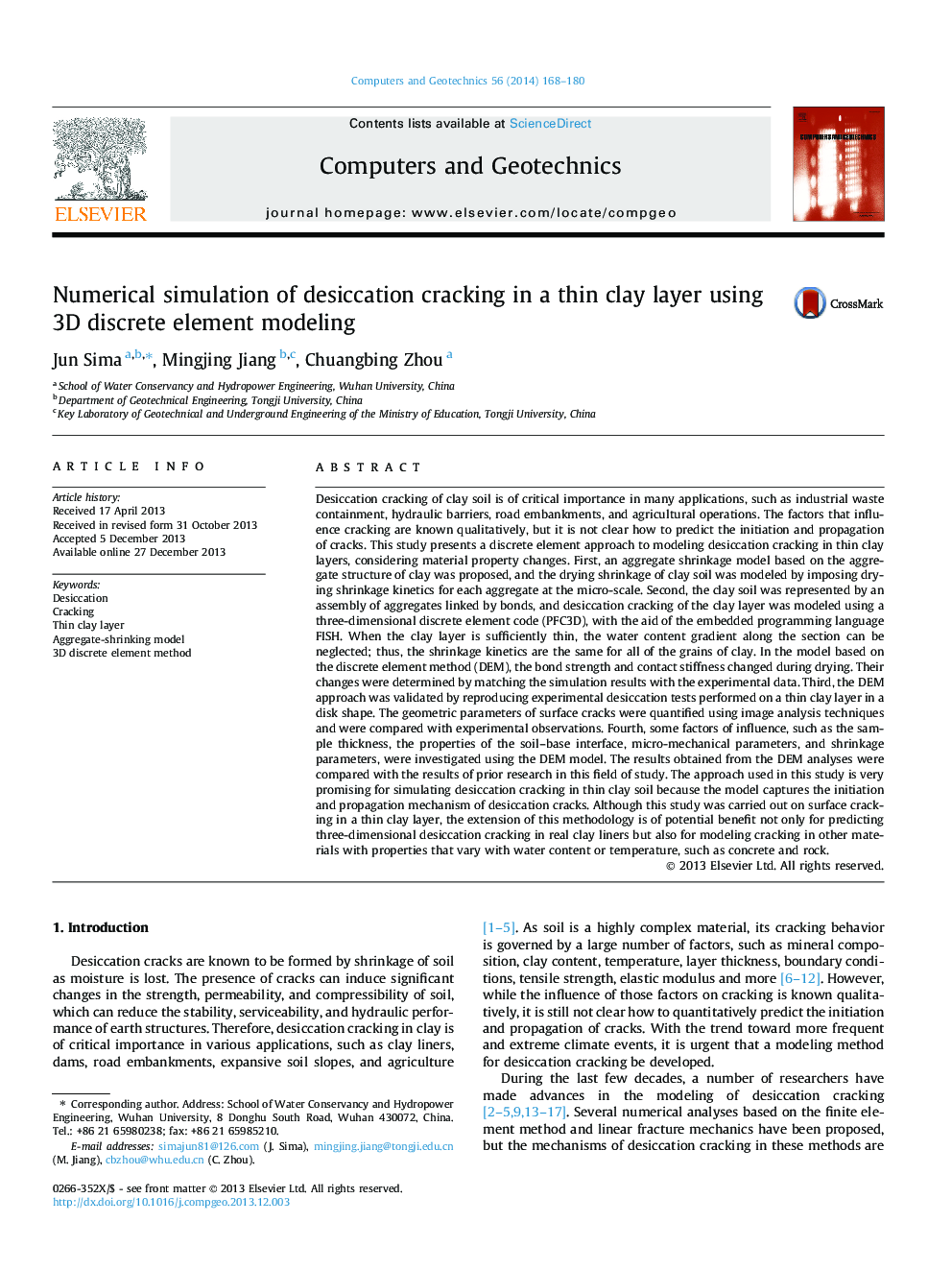| کد مقاله | کد نشریه | سال انتشار | مقاله انگلیسی | نسخه تمام متن |
|---|---|---|---|---|
| 254806 | 503329 | 2014 | 13 صفحه PDF | دانلود رایگان |
Desiccation cracking of clay soil is of critical importance in many applications, such as industrial waste containment, hydraulic barriers, road embankments, and agricultural operations. The factors that influence cracking are known qualitatively, but it is not clear how to predict the initiation and propagation of cracks. This study presents a discrete element approach to modeling desiccation cracking in thin clay layers, considering material property changes. First, an aggregate shrinkage model based on the aggregate structure of clay was proposed, and the drying shrinkage of clay soil was modeled by imposing drying shrinkage kinetics for each aggregate at the micro-scale. Second, the clay soil was represented by an assembly of aggregates linked by bonds, and desiccation cracking of the clay layer was modeled using a three-dimensional discrete element code (PFC3D), with the aid of the embedded programming language FISH. When the clay layer is sufficiently thin, the water content gradient along the section can be neglected; thus, the shrinkage kinetics are the same for all of the grains of clay. In the model based on the discrete element method (DEM), the bond strength and contact stiffness changed during drying. Their changes were determined by matching the simulation results with the experimental data. Third, the DEM approach was validated by reproducing experimental desiccation tests performed on a thin clay layer in a disk shape. The geometric parameters of surface cracks were quantified using image analysis techniques and were compared with experimental observations. Fourth, some factors of influence, such as the sample thickness, the properties of the soil–base interface, micro-mechanical parameters, and shrinkage parameters, were investigated using the DEM model. The results obtained from the DEM analyses were compared with the results of prior research in this field of study. The approach used in this study is very promising for simulating desiccation cracking in thin clay soil because the model captures the initiation and propagation mechanism of desiccation cracks. Although this study was carried out on surface cracking in a thin clay layer, the extension of this methodology is of potential benefit not only for predicting three-dimensional desiccation cracking in real clay liners but also for modeling cracking in other materials with properties that vary with water content or temperature, such as concrete and rock.
Journal: Computers and Geotechnics - Volume 56, March 2014, Pages 168–180
